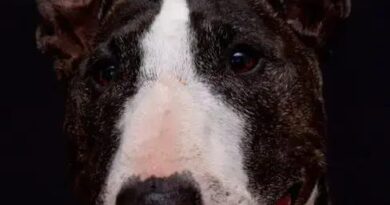O que é Olfato
What is Olfaction?
Olfaction, commonly known as the sense of smell, is a crucial sensory system that allows dogs to perceive and interpret various odors in their environment. This remarkable ability is primarily due to the unique structure of a dog’s nasal cavity, which is significantly more complex than that of humans. Dogs possess approximately 300 million olfactory receptors, compared to a mere 5 million in humans, enabling them to detect scents at incredibly low concentrations.
The Anatomy of a Dog’s Nose
The anatomy of a dog’s nose is specifically designed for olfactory processing. The large surface area of the nasal cavity, combined with the presence of specialized olfactory epithelium, enhances a dog’s ability to capture and analyze scents. Additionally, the presence of turbinates—bony structures within the nasal cavity—helps to increase airflow and improve scent detection, allowing dogs to distinguish between a multitude of different smells.
How Dogs Process Smells
When a dog inhales, air passes through the nasal cavity where it encounters olfactory receptors. These receptors send signals to the olfactory bulb in the brain, which processes the information and allows the dog to identify and differentiate between various scents. This process is not only fast but also incredibly efficient, enabling dogs to track scents over long distances and even days after the scent was first laid down.
The Importance of Olfaction in Dogs
Olfaction plays a vital role in a dog’s daily life. It is essential for communication, navigation, and even hunting. Dogs use their sense of smell to gather information about their surroundings, identify other animals, and even detect changes in their owner’s emotional state. This reliance on olfactory cues makes dogs exceptional companions and working animals, particularly in roles such as search and rescue, detection, and therapy.
Olfactory Training for Dogs
Olfactory training is a popular method used to enhance a dog’s natural scenting abilities. This training can involve various activities, such as scent discrimination games, tracking exercises, and even specialized tasks like drug detection or search and rescue missions. By engaging in olfactory training, dogs not only improve their scenting skills but also enjoy mental stimulation and bonding time with their owners.
Common Myths About Dog Smell
There are several myths surrounding a dog’s sense of smell. One common misconception is that all dogs have the same olfactory capabilities. In reality, different breeds have varying levels of olfactory sensitivity, with some breeds, like Bloodhounds, being particularly renowned for their exceptional scent-tracking abilities. Additionally, while dogs can detect a wide range of odors, they do not have a “super smell” that allows them to identify every scent perfectly.
The Role of Olfaction in Dog Behavior
Olfaction significantly influences dog behavior. Dogs often engage in scent-marking, a behavior that allows them to communicate with other dogs by leaving their scent in specific areas. This behavior is crucial for establishing territory and social hierarchies. Furthermore, a dog’s ability to detect pheromones—chemical signals released by other animals—can impact their interactions and relationships with both humans and other dogs.
Health Implications of Olfactory Dysfunction
Olfactory dysfunction in dogs can indicate underlying health issues. A sudden loss of smell may be a sign of nasal infections, tumors, or other medical conditions that require attention. Regular veterinary check-ups can help identify and address any potential issues related to a dog’s sense of smell, ensuring their overall health and well-being.
Conclusion: The Fascinating World of Dog Olfaction
Understanding the intricacies of olfaction in dogs opens up a fascinating world of sensory perception. From their unique anatomical features to their remarkable ability to process scents, dogs demonstrate an extraordinary connection to their environment through their sense of smell. This understanding not only enhances our appreciation for our canine companions but also highlights the importance of olfaction in their daily lives.



